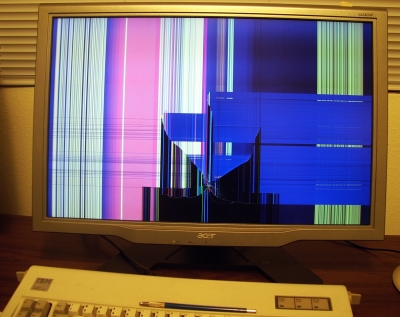A few days ago I decided that my eyes deserved a break and I deserved a treat. I ordered an Acer 24″ AL2423W LCD monitor from NewEgg.
Let’s get to the bottom line:
This monitor is one of the few things I have bought in many years that I really liked right out of the box and beyond.
Nowadays, I live in a world that habit and a slippery slope has filled, to my constant irritation and chagrin, with “stuff”. Lots of stuff. A houseful of stuff. Useless stuff. Wasteful stuff. Stuff that should never have been aquired, bought, stolen, accepted or allowed in to this house. Stuff. Stuff. … … … … Stuff.
I don’t easily buy more stuff. Buying stuff hurts. Bad.
But this monitor I like.
Online reviews say it’s too bright. It is bright. I like it bright. It made my 21″ CRT look dim by comparison. Yes!
It runs 1920 pixels by 1200 pixels. That’s nice. And it’s big enough that you don’t need to squint to see those pixels.
The out-of-box is great. Both DVI and VGA cords are included. A class outfit, Acer. Make the customer smile. Make it easy for the customer to like the product.
Again, I do.
Well.
Except for one tiny thing:
Turns out, a cap on the top of the stand comes off.
And, if you’re inadvertantly holding the monitor by that cap while you attach the VGA cable to a rather hard to reach plug, and the cap does come off, then the monitor falls on the corner of the keyboard and …

I screamed. I swore. I hated the thought of even using the computer without this monitor. This monitor is the kind of thing you start using and in 30 seconds you never look back. I screamed some more. I swore some more. … What are the stages of grief? Who cares? I screamed some more.
It’s not the cap’s fault, really. I just blew it. It really hurts. I liked that monitor. It simply made me smile to look at it and use it. It brought moments of happiness to me. I’m not 12. Stuff doesn’t do that any more. This monitor did.
But, now it’ll be hard to justify a third one to twin the replacement up. 6 bills is 6 bills, after all. And, the kids aren’t completely de-nested.
